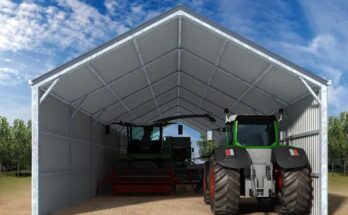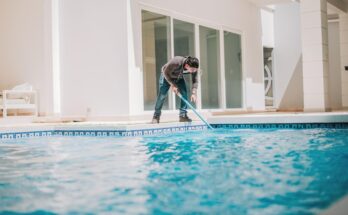The maintenance task is applying a concrete sealer to protect the driveway from damage. Sealing fills in pores to prevent water, oils, grease, salt, and other corrosive chemicals from penetrating the surface. It also helps resist staining and enhances the appearance by providing an extra glossy sheen. Driveways should be sealed as soon as the surface has fully cured, usually within 6 months of installation.
After that, resealing is recommended every 1-3 years depending on traffic volume, weather conditions, and original sealer quality. Solvent-based acrylic sealers tend to last 2-4 years, while water-based versions may need to be reapplied annually. When selecting a concrete sealer, choose one designed to work on driveways and high-traffic areas. Look for a product that will protect against both water and oil-based stains. For best results, apply the sealer on a dry day with no rain in the forecast, using a paint roller and Extension pole to reach all areas evenly. Allow the sealer to fully cure for 24-48 hours before driving on the driveway.
Regular cleaning
A weekly sweeping or blowing with a leaf blower will remove loose debris that settles in and damages the surface over time. For a deeper clean, you’ll need to scrub the driveway with a stiff brush and concentrated cleaner formulated for concrete. A pressure washer is useful for blasting away stubborn stains like oil drips or rust spots. When using a pressure washer for concrete cleaning, limit the PSI to under 2,000 to avoid damaging the driveway. No matter what cleaning method you use, rinse the driveway thoroughly and allow it to dry completely before sealing or driving on it.
Prompt repairs
Cracks, chips, and crumbling are inevitable issues you’ll encounter with any concrete surface. Left untreated, minor flaws will spread and lead to more extensive deterioration. For hairline cracks, a DIY concrete crack filler is an easy, inexpensive fix. These sealants are applied like caulk and dry to create a waterproof barrier. If cracks are larger or more numerous, calling a professional concrete contractor is wise. They have the tools and materials to resurface damaged sections of the driveway. An overlay with new concrete may be required in cases of extreme deterioration.
Watch for pitting and erosion
Watch for areas of the driveway that seem to retain water and puddle after rain. It indicates erosion is forming hollows that will only grow worse over time. Filling low spots and pits with a patching compound before they get severe will help level the surface and prevent further damage. For widespread erosion across a large section of driveway, resurfacing with a concrete overlay is likely needed. It will create a smooth, level, and consistent driving surface.
Control drainage issues
Proper drainage and slope away from the driveway and garage are imperative to prevent water damage. Signs of drainage problems include persistent puddles, algae or moss growth, and sections that remain wet after rain. Solutions could include re-grading the driveway area to achieve a 1-inch slope 12 feet away from the garage. Installing French drains near the driveway or adding rain gutters also helps divert water. In some cases, drainage tiles may need to be added underneath the concrete driveways Sydney to collect and redirect water away from the concrete. Getting professional help is advised for major drainage issues to find the right solution.




